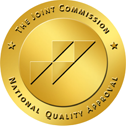Different Types Of Drug Abuse
People can abuse any substance, medication, compound, or drug that induces either altered states of consciousness, euphoria, or both. Most of this abuse can lead to severe withdrawal, which needs a medically managed detox if the individual wants to stop. The many types of drug abuse cover the entire spectrum of compounds. But It is not limited to illegal drugs. Drug abuse can include both illegitimate substances people acquire on the street and substances acquired legally. However, people can obtain drugs legally through a doctor in entirely unscrupulous ways.
Alcohol: The Most Common Type Of Drug Abuse
Alcohol generates short-term euphoria and sedation. Perhaps the most widely abused substance available. Prolonged Abuse induces severe physical handicaps, liver damage, and, eventually, mental health deterioration. Alcohol can act as a hypnotic sedative. It works by depressing the central nervous system. Alcohol slows down bodily functions such as heart rate, blood pressure, and breathing. Alcohol generates a variety of effects that run the gamut from minor sedation to complete anesthesia. Due to high amounts of sugar in most beverages, a dangerous combination of mild stimulant and powerful depressant is created. Signs of alcohol abuse include slurred speech, impaired motor functioning, impaired judgment, staggering behaviors.
Narcotics
Narcotics derive from the Greek word for benumb (Narko). Medically it refers to a type of drug abuse that induced sleep or have analgesic, pain-killing properties. Today, people associate the term with drugs that fall into the classification of Opiates, such as Morphine, Heroin, and their analogs like Hydrocodone (Vicodin). However, the legal definition of Narcotics differs from the medical definition. Thus, the two different classifications consequently cover a broad range of psychoactive compounds and drugs. The first type of drug abuse people truly deemed a Narcotic was liquor. Its use goes back to ancient times. The side effects of Narcotics intoxication include:
- drowsiness
- difficulty concentrating
- sense of apathy
- decreased physical activity
- constriction of the pupils
- flushing of the face and neck
- constipation
- nausea and vomiting
- respiratory depression
Amphetamines
Amphetamines operate on the mesolimbic pathways. They stimulate the production of the neurotransmitters Dopamine and Nor-epinephrine. These drugs are one of the most widely abused drugs available today. Amphetamines generate a rush and high that is as intense as it is brief, creating a powerful reward stimulus-loop that inevitably, over time, leads to more use, with each subsequent dose reinforcing the next. Amphetamines first appeared en masse in urban neighborhoods in the early to mid-1990s. They quickly evolved into public health crises of epidemic proportions, affecting hundreds of thousands of people regardless of age, gender, ethnicity, or socio-economic status.
Prescription Types of Drug Abuse
Prescription drug addiction covers an enormous array of different medications designed to treat a variety of ailments. The vast majority of prescription types of drug abuse are relatively harmless, at least with regards to addiction, and covers the entire spectrum of both physical and mental health ailments. Prescription drugs cover all manner of mental health issues. However, with regards to Abuse Potential, the medications of interest include Stimulants, such as Ritalin and Adderall (used for the treatment of ADHD), sedatives and tranquilizers, and Narcotic Painkillers such as Percocet, Vicodin, or Morphine.
Benzodiazepines
Benzodiazepines are a class of drugs that are hypnotic sedatives or minor tranquilizers. They work by depressing the central nervous system and slowing down bodily functions such as heart rate, blood pressure, and breathing. Neurologically they act on GABA receptors in the brain, which is an area of neuro-functioning associated with the pleasure center. There are several different Benzodiazepines available today: Xanax, Librium, Klonopin, Valium, Ativan.
Club Drugs
Club drugs refer to a variety of compounds that adolescents, teenagers, and young adults tend to abuse. These drugs span a fairly broad spectrum of substances that include both Stimulants and Depressants such as MDMA (ecstasy), GHB (Gamma-hydroxybutyric Acid), Ketamine Hydrochloride (Special K). Over the past decade, they have become popular with people who go to raves, bars, concerts, and nightclubs. Because many of the drugs (although not all) are relatively new to the market, research regarding long-term effects is incomplete. Current data and statistics, however, indicate that those within a specific youth culture most frequently abuse these substances and, as such, pose certain clinical considerations with regards to treatment protocols that might be different from therapeutic approaches targeting an adult population of abusers.
Cocaine & Crack
Cocaine is a highly addictive, highly powerful stimulant that comes from the Coco plant and typically comes in a powdered form. People snort, inject, or cook down this powder into a compound that they can smoke called free-base or crack. Except for Methamphetamine, Cocaine is presently the single most abused stimulant in the country and is frequently used with depressants. In the 1970s, the drug enjoyed a renaissance in popularity, and experts touted it as being non-addictive because it doesn’t have the physical symptoms of withdrawal one sees with Heroin or liquor or sedatives. After the explosion of crack in the mid-1980s, however, opinion changed, and it is now accepted that cocaine has powerfully addicting psychological properties.
Hallucinogens
Hallucinogen types of drug abuse refer to a class of substances that fall into three distinct categories. These include Deliriants, Psychedelics, and Dissociatives. Although there is an overlap between the effects and symptoms of intoxication, drugs in each category tend to generate different experiences. Historically, the use of Hallucinogens goes back thousands of years. In different cultures, they have been utilized for a variety of reasons, typically for religious ceremonies (for example, Native Americans have taken Mescaline for centuries to induce spiritual experiences). In general, unlike the effects produced by opiates or stimulants, which are used for purely recreational reasons, the psychedelic experience is commonly associated with altered states of being or consciousness, with trance-like states, and with dreaming and meditation.
A Look At The Types Of Drug Abuse
Generally speaking, drugs of abuse fall into one of three categories: stimulants, narcotics, and sedatives. The federal government tightly regulates the prescribing criteria for each class of medication, whether it is an analgesic pain-killer or a stimulant. Abuse potential determines a drug’s rating. For example, the intensity of euphoria, its onset, and the potential to generate tolerance and dependence are factors. Many individuals struggling with dual diagnosis try to self-medicate with the drugs listed above. This seldom works and is a clear cry for help. Help exists at Casa Palmera. Contact us today.




